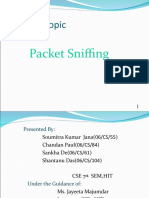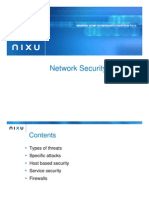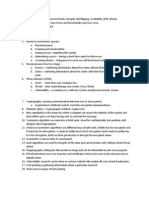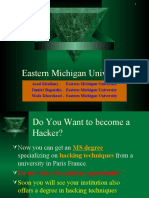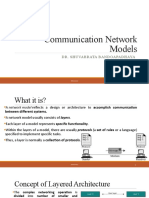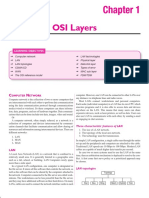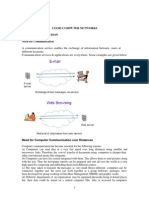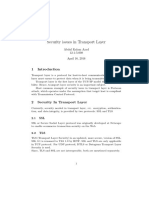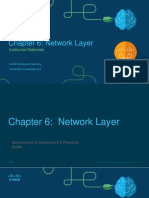0% found this document useful (0 votes)
68 views37 pagesCSE 477: Introduction To Computer Security
The document discusses networking security topics including passive attacks like packet sniffing and scanning, and active attacks like spoofing, hijacking, and denial of service attacks. It covers networking concepts and the layered Internet protocol stack. Packet encapsulation and encryption are described as ways to secure data in transit.
Uploaded by
hafeezCopyright
© © All Rights Reserved
We take content rights seriously. If you suspect this is your content, claim it here.
Available Formats
Download as PDF, TXT or read online on Scribd
0% found this document useful (0 votes)
68 views37 pagesCSE 477: Introduction To Computer Security
The document discusses networking security topics including passive attacks like packet sniffing and scanning, and active attacks like spoofing, hijacking, and denial of service attacks. It covers networking concepts and the layered Internet protocol stack. Packet encapsulation and encryption are described as ways to secure data in transit.
Uploaded by
hafeezCopyright
© © All Rights Reserved
We take content rights seriously. If you suspect this is your content, claim it here.
Available Formats
Download as PDF, TXT or read online on Scribd
/ 37




